1. Flowchart
A flowchart is a diagram that shows the steps of a process or program using symbols and arrows.
It helps to visualize the flow of a task or algorithm, making it easier to understand and follow.
2. Algorithm
An algorithm is a set of clear and ordered steps used to solve a problem or complete a task.
It can be written in plain language or structured form.
3. Pseudocode
Pseudocode is a way to write an algorithm using a mix of plain language and simple programming-like instructions.
It is not actual code but helps plan before writing the real program.
4. Example of Flowchart: Adding Two Numbers
This flowchart shows the steps to add two numbers:
Start
Input the first number
Input the second number
Add the two numbers
Show the result
End
These steps are shown as boxes connected by arrows in a flowchart diagram.
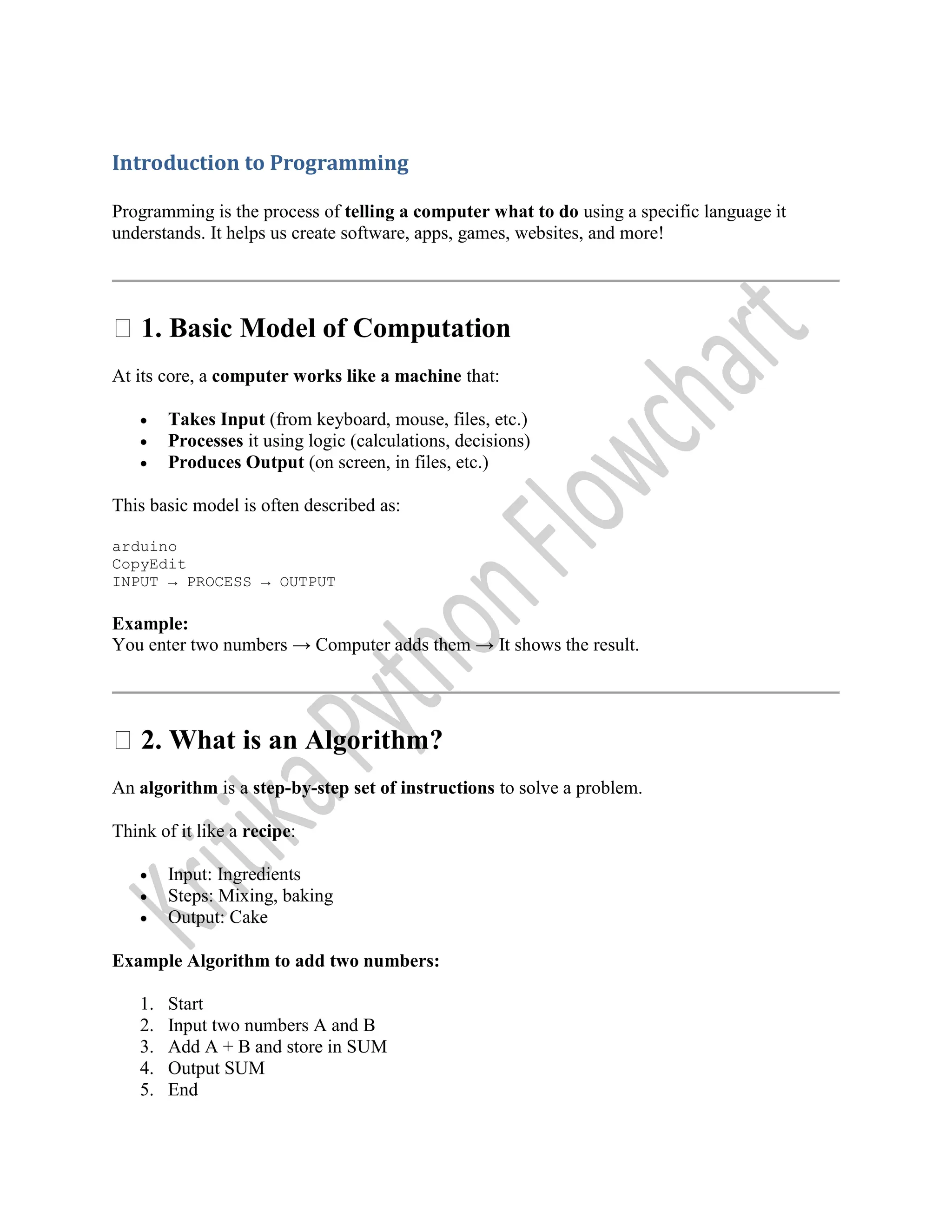
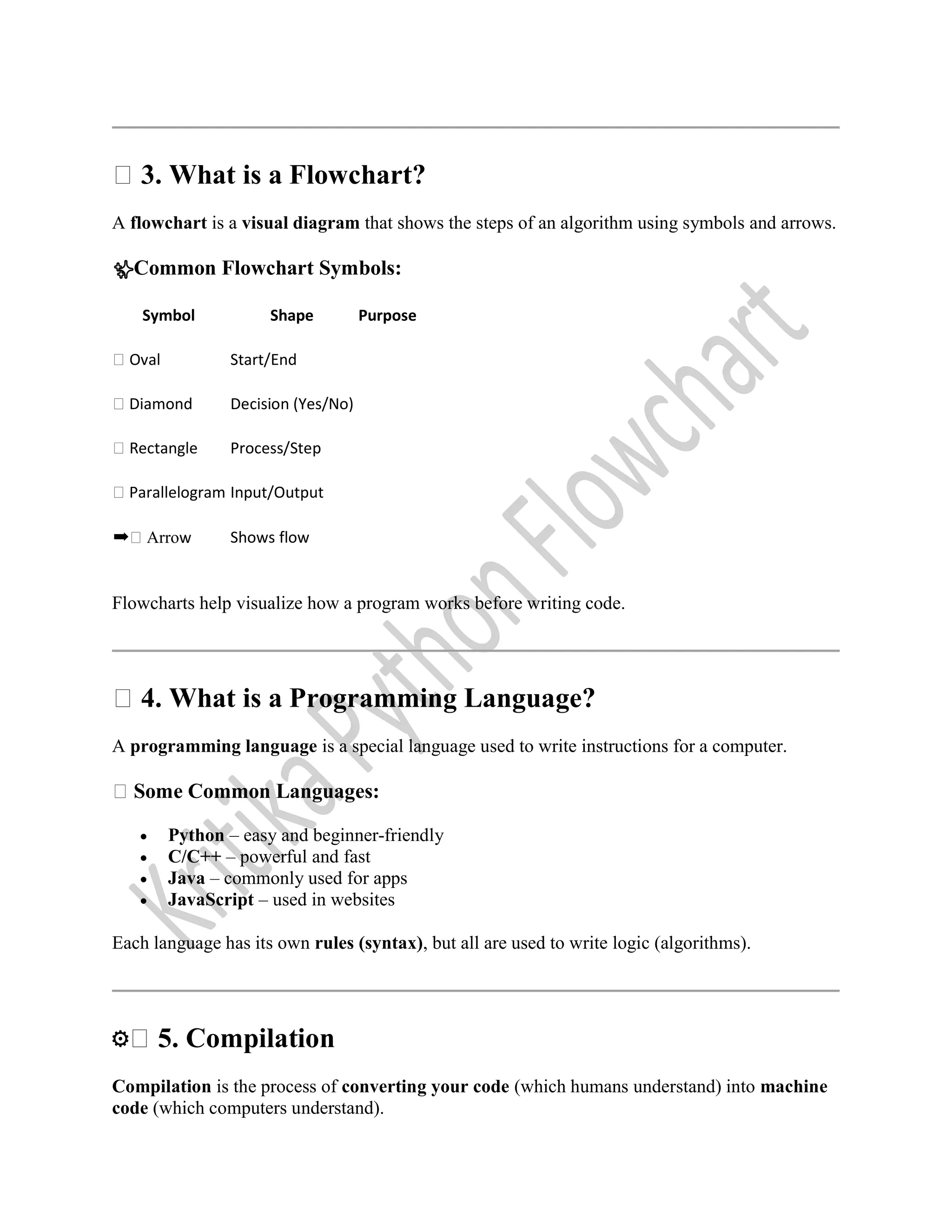
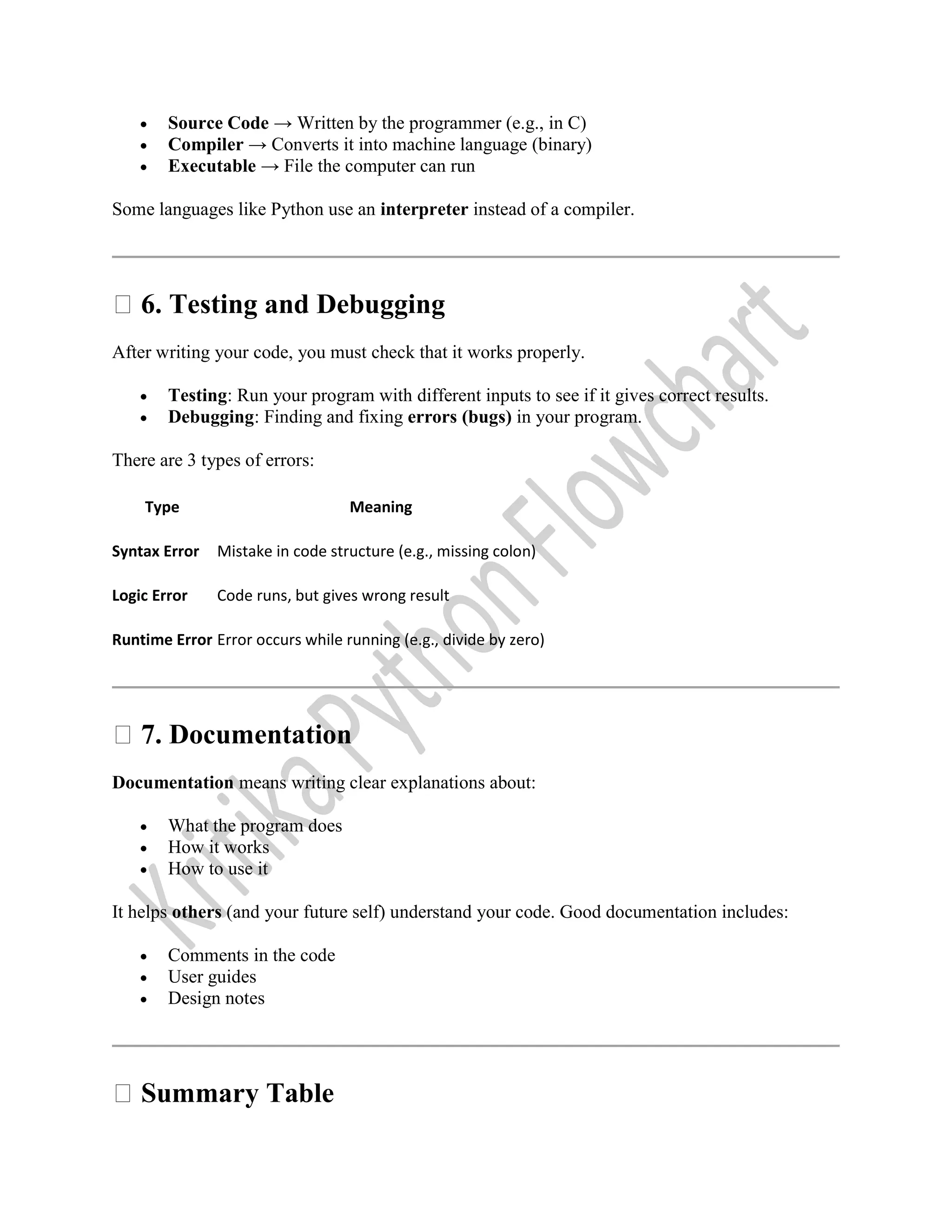
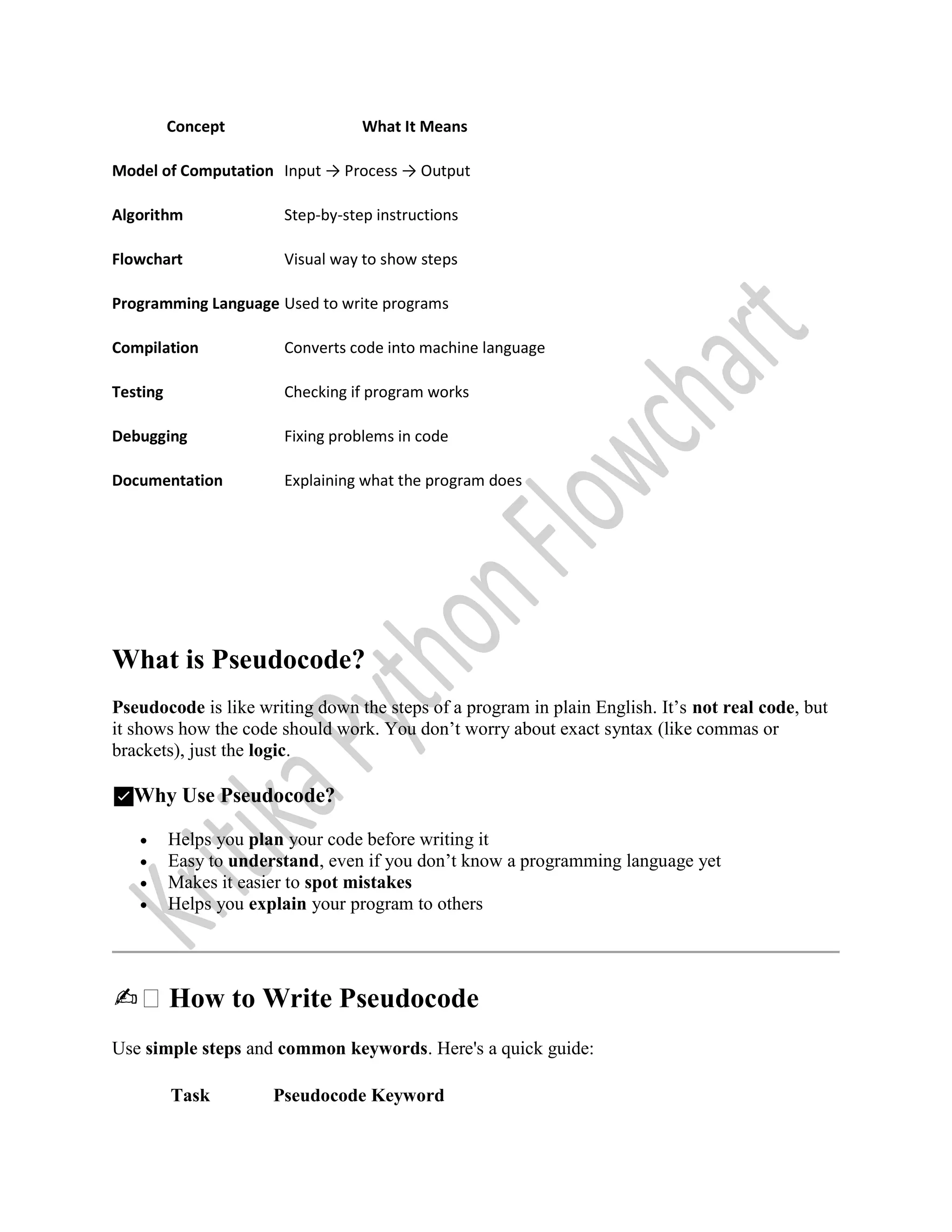
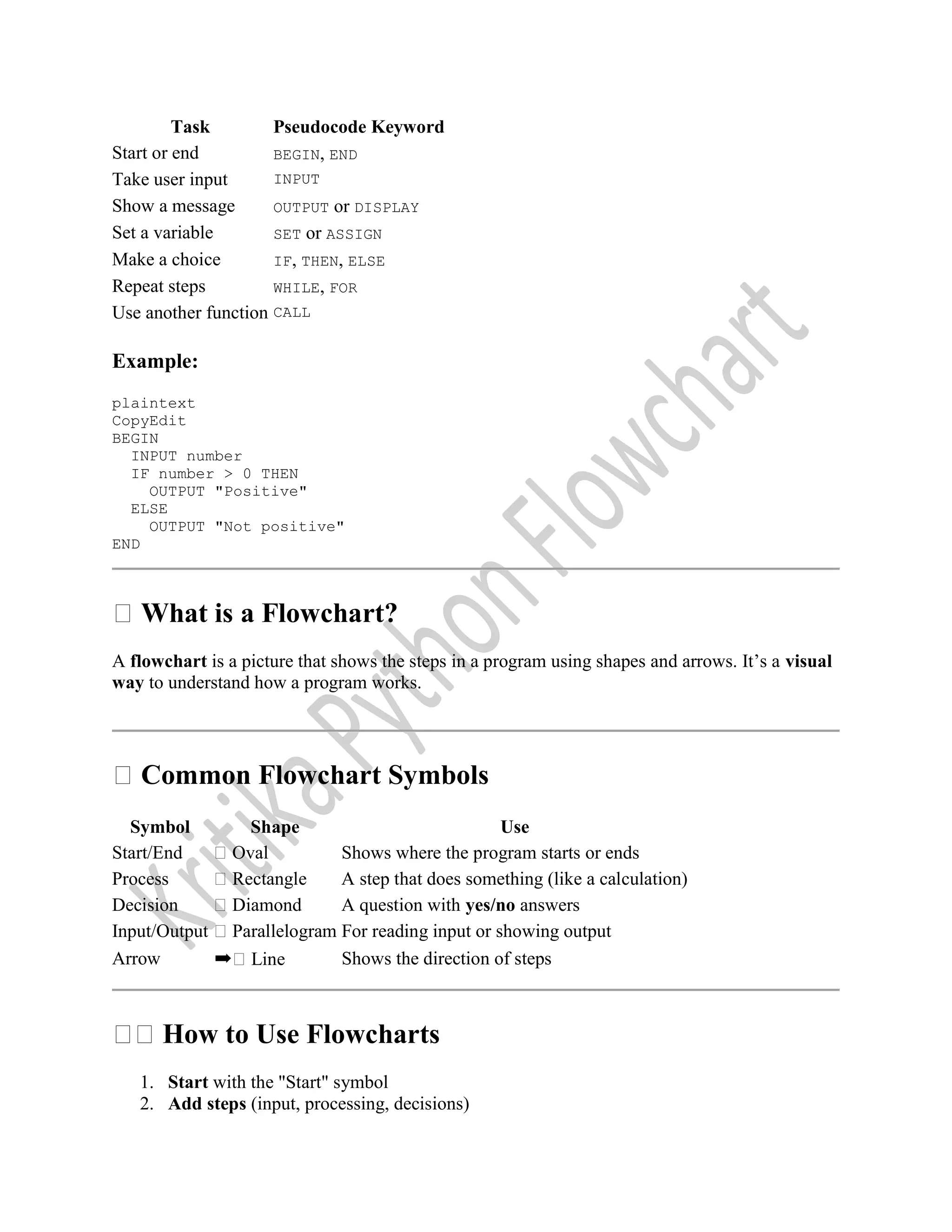
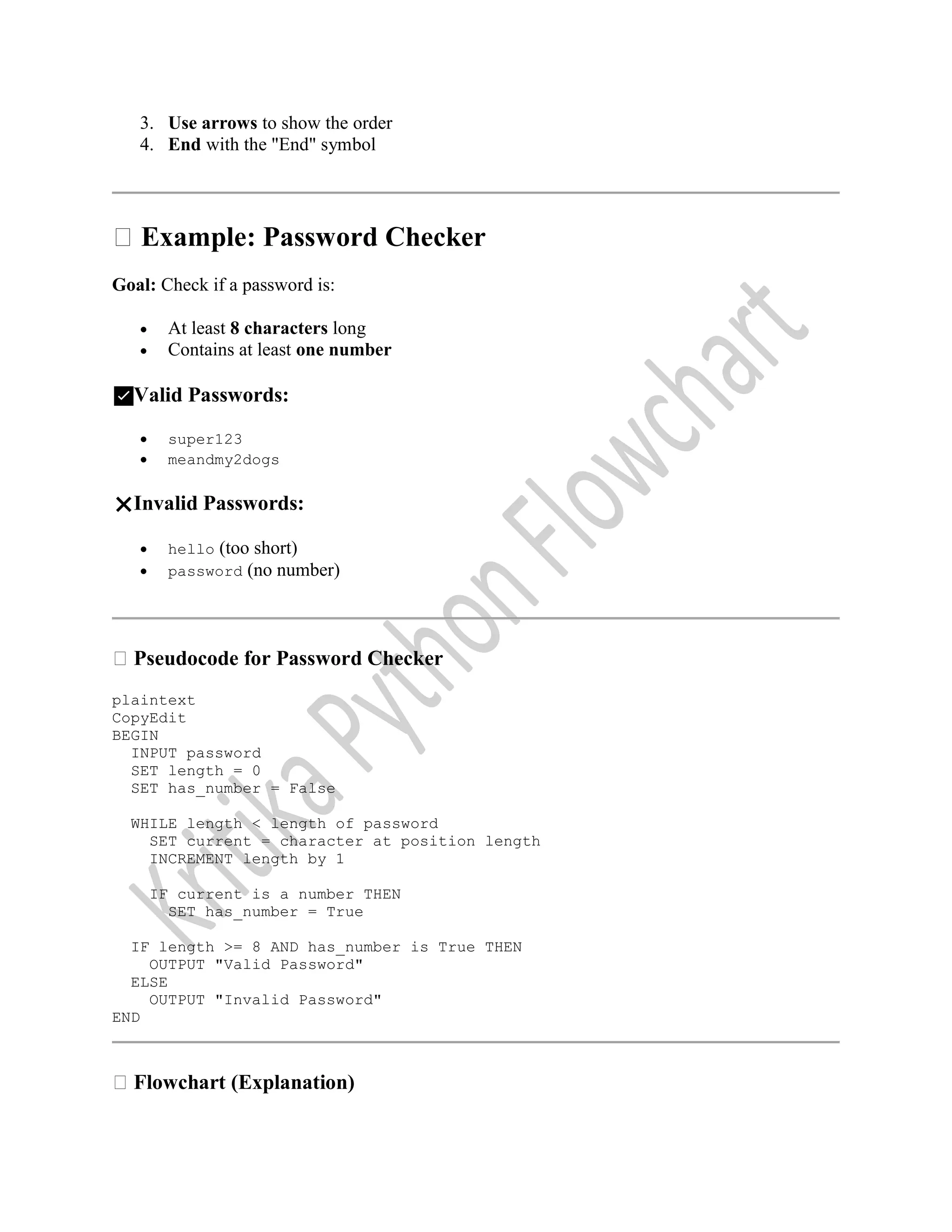
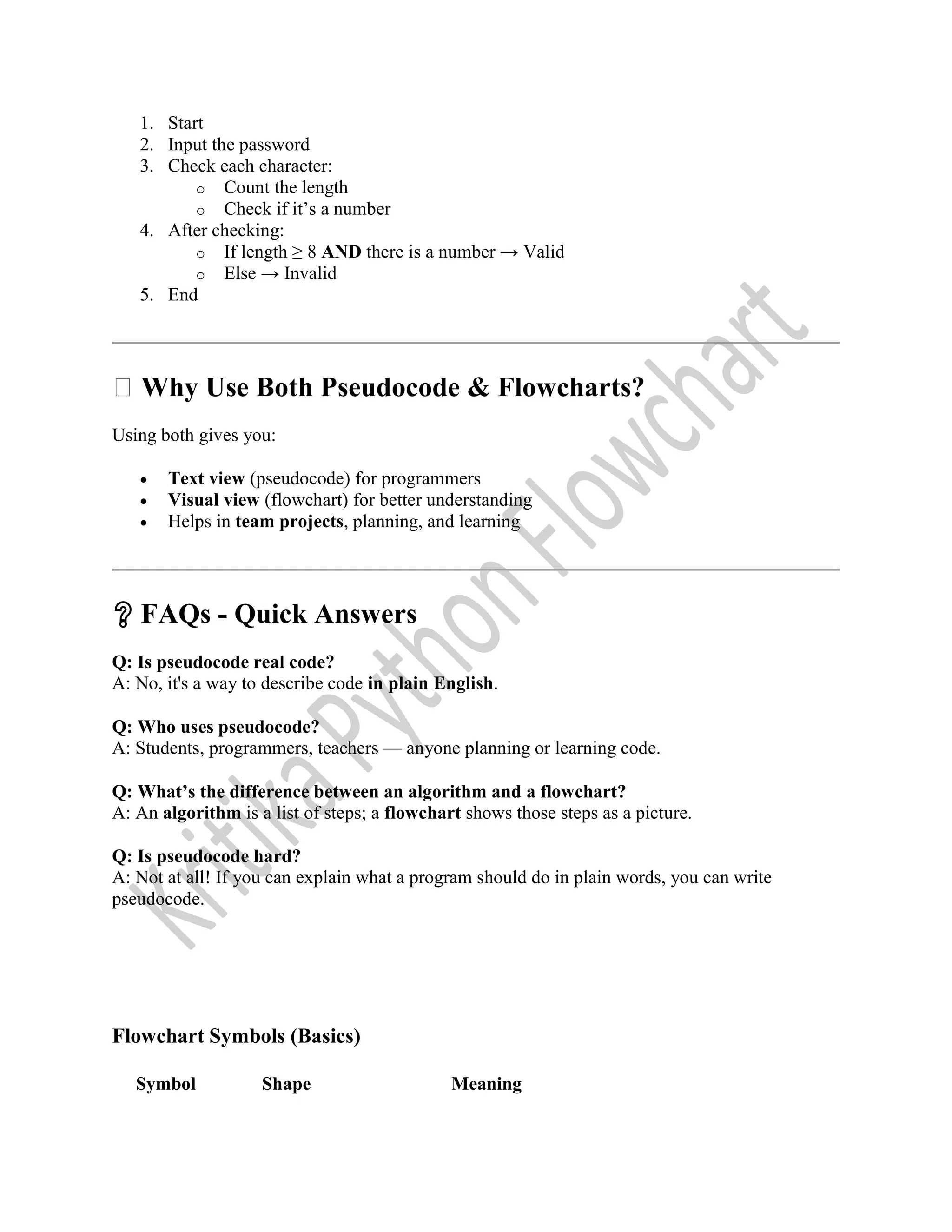
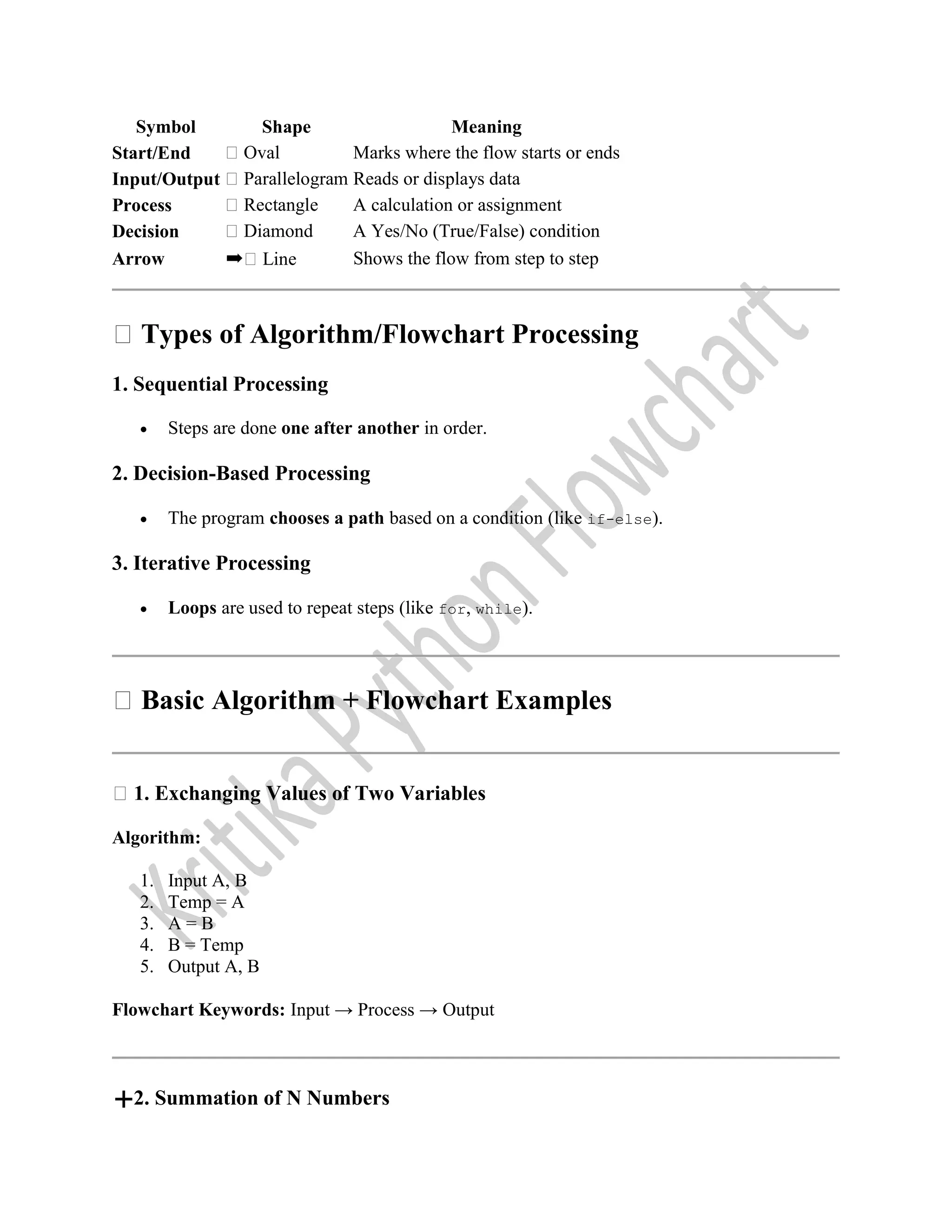
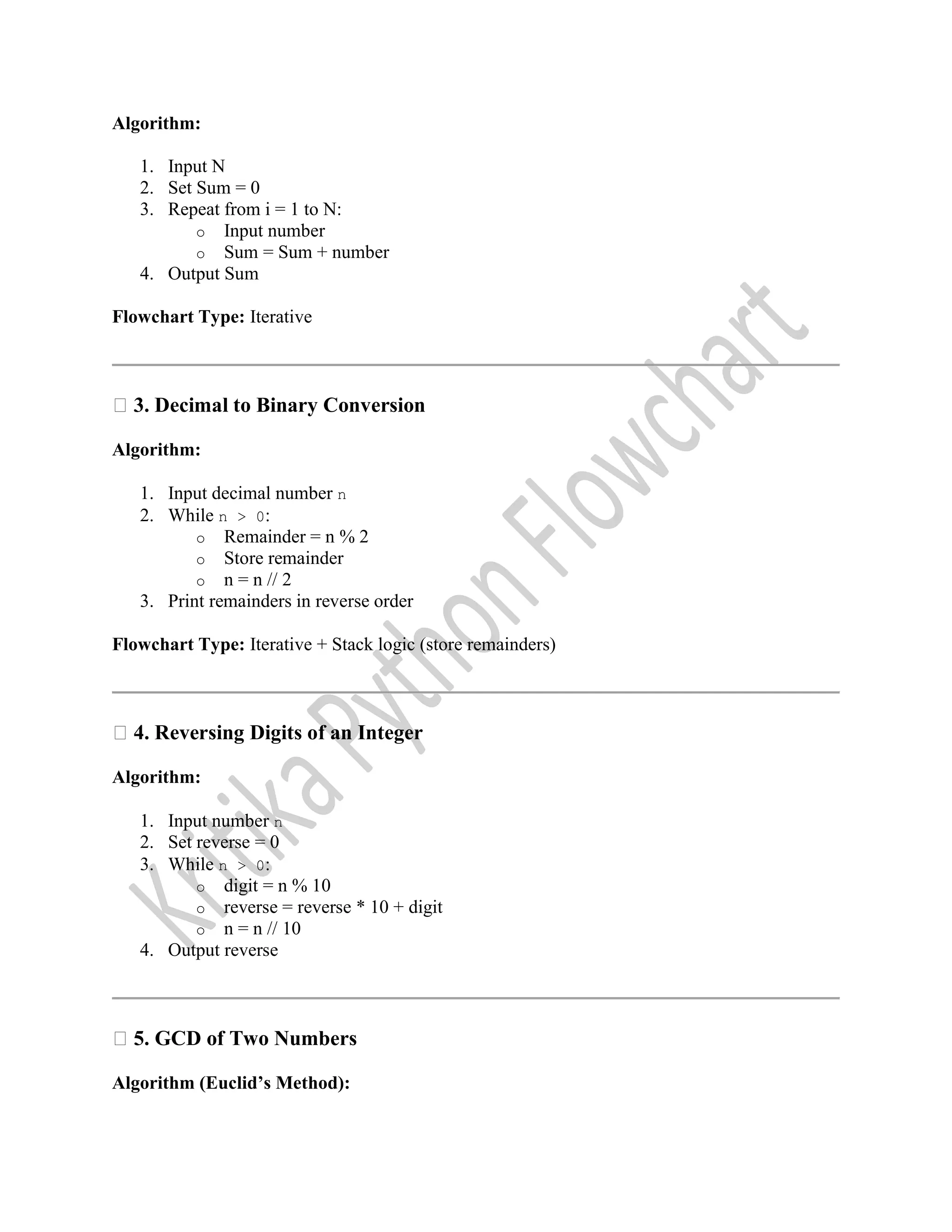
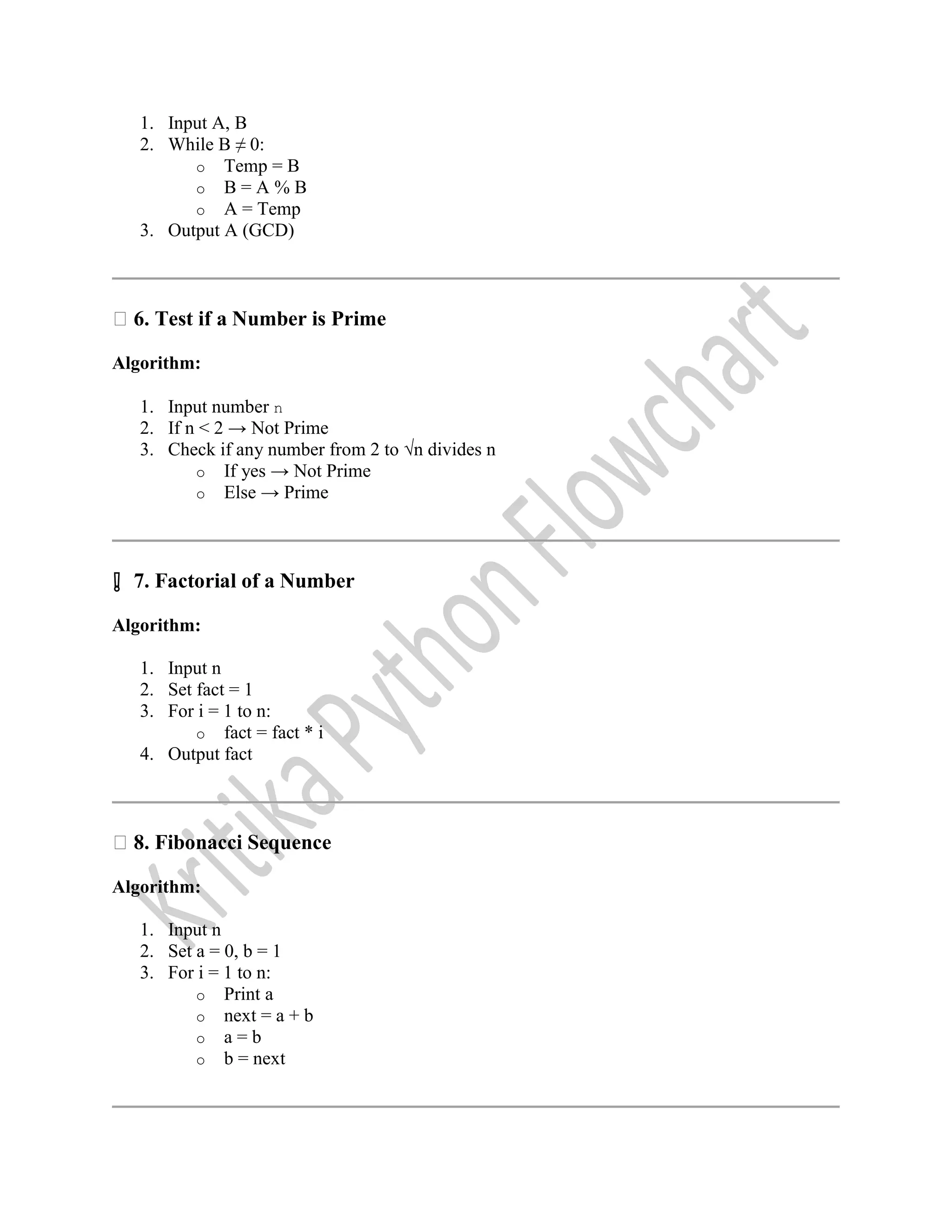
![9. Evaluate sin(x) Using Series
Use the Taylor Series:
sin(x) = x - x³/3! + x⁵/5! - x⁷/7! + ...
Algorithm:
1. Input x, number of terms
2. Set sign = 1, sinx = 0, term = x
3. Repeat with increasing odd powers and alternating signs
4. Output sinx
10. Reverse Order of Elements in an Array
Algorithm:
1. Input array A[0...n-1]
2. Set start = 0, end = n-1
3. While start < end:
o Swap A[start] and A[end]
o start++, end--
4. Output array
11. Find Largest Number in an Array
Algorithm:
1. Input array A[0...n-1]
2. Set max = A[0]
3. For i = 1 to n-1:
o If A[i] > max → max = A[i]
4. Output max
12. Print Elements of Upper Triangular Matrix
For matrix A[i][j], upper triangle includes elements where i ≤ j
Algorithm:
1. Input matrix A[n][n]](https://image.slidesharecdn.com/pythonchapter12-250704071606-17662046/75/Introduction-to-programming-flowchart-algorithm-11-2048.jpg)
![2. For i = 0 to n-1:
o For j = 0 to n-1:
If i ≤ j → Print A[i][j]
Else → Print 0
✅Summary Chart
Problem Type of Processing
Swap Two Numbers Sequential
Sum of Numbers Iterative
Decimal to Binary Iterative
Reverse Digits Iterative
GCD Iterative (with condition)
Prime Test Decision + Iterative
Factorial Iterative
Fibonacci Iterative
sin(x) Iterative
Reverse Array Iterative
Largest in Array Iterative + Decision
Upper Triangular Matrix Nested Iteration + Condition](https://image.slidesharecdn.com/pythonchapter12-250704071606-17662046/75/Introduction-to-programming-flowchart-algorithm-12-2048.jpg)